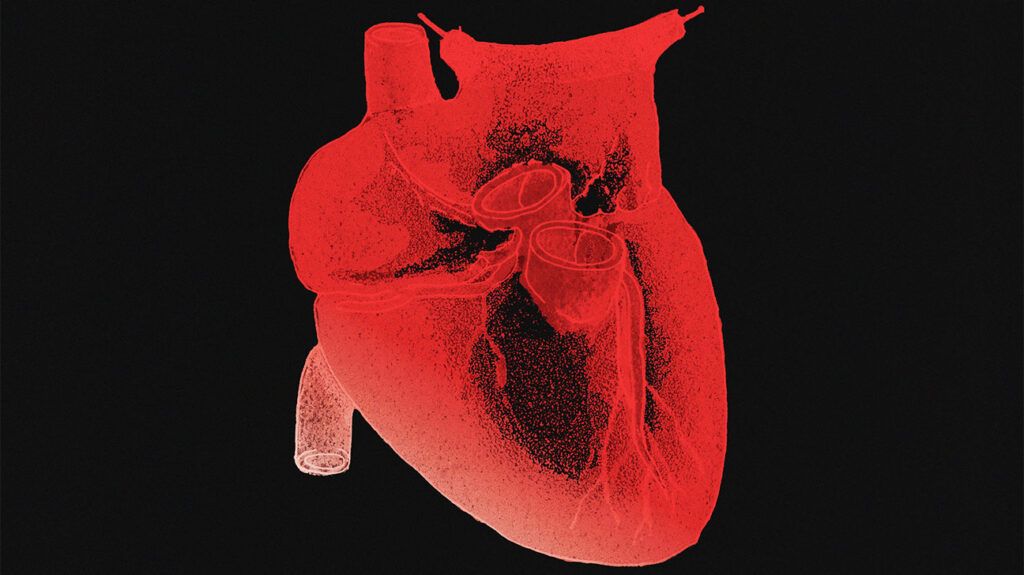Heart valves allow blood to flow one way and prevent it from flowing in the wrong direction. The tricuspid valve controls blood flow between the right atrium and right ventricle. The bicuspid or mitral valve does the same on the left.
The heart consists of
Heart valves open to allow blood to flow between the chambers and in and out of the heart. They close to prevent blood from flowing the wrong way.
Each valve has cusps, or flaps of tissue, which open and close to let blood flow through the heart.
This article explores the differences between the tricuspid and bicuspid valves and the problems that can affect them.

The following table shows
| Tricuspid valve | Bicuspid or mitral valve | |
|---|---|---|
| The valve opens to let blood flow from the right atrium to the right ventricle. | Has three cusps, or leaflets. | Has two cusps, or leaflets. |
| Location | Between the right atrium and the right ventricle. | Between the left atrium and the left ventricle. |
| How it works | The valve opens to let blood flow from the right atrium to the right ventricle. | Allows blood flow to the left ventricle but stops blood flowing backward from the left ventricle to the left atrium. |
| Function | Allows blood flow to the left ventricle but stops blood flowing backward from the left ventricle to the left atrium. | Allows blood flow to the left ventricle but stops blood flowing backward from the left ventricle to the left atrium. |
The
The valves allow the heart to receive blood from the body and pump it to the lungs to oxygenate it. It then pumps the oxygen-rich blood back out of the body.
These valves need to open and close fully and easily with each heartbeat to work properly. Issues with the heart valves can interfere with this function.
Heart valve disease can cause regurgitation, in which a valve does not close completely, and blood can leak backward in the direction it came from.
Heart valves also need to open properly. Aortic stenosis refers to the narrowing and stiffening of the heart valve. This means it cannot open as widely as it should to allow blood to pass through, which restricts the blood flow.
All valves need the right number of cusps to work properly, but sometimes, a cusp may be missing. If the heart cannot pump blood as effectively as it should, it can lead to serious complications, such as heart failure or sudden cardiac arrest.
Learn more about aortic stenosis.
Tricuspid valve
The tricuspid valve opens to let blood flow from the right atrium to the right ventricle. It closes to prevent blood from flowing from the right ventricle toward the right atrium.
Bicuspid or mitral valve
The bicuspid valve opens to let blood flow from the left atrium to the left ventricle. It closes to prevent blood from flowing from the left ventricle back toward the left atrium.
The bicuspid valve has
Pulmonary valve
The pulmonary valve sits between the right ventricle and the pulmonary artery.
This valve opens to let blood pass from the right ventricle through the pulmonary artery to the lungs to oxygenate the blood.
The pulmonary valve closes to prevent blood from flowing back from the pulmonary artery to the right ventricle.
Aortic valve
The aortic valve sits between the left ventricle and the aorta, which is the major artery carrying oxygenated blood from the heart to the rest of the body.
This valve opens to let blood flow from the left ventricle to the aorta and closes to prevent blood from flowing back to the left ventricle.
Learn more about heart valves.
The below conditions can affect the tricuspid valve.
Tricuspid atresia
Tricuspid atresia means the heart
Treatment for tricuspid atresia may include using a stent to increase blood flow to the lungs, or banding, which narrows the pulmonary artery to decrease blood flow to the lungs.
Tricuspid regurgitation
Tricuspid regurgitation occurs if the tricuspid valve leaks blood back toward the right atrium. Increased blood flow to the right atrium
Treatment may include treating the underlying cause and repairing or replacing the atypical valve.
Tricuspid stenosis
With tricuspid stenosis, the opening of the tricuspid valve narrows and restricts blood flow to the right ventricle. This
Treatment may include regular monitoring of the heart, medications, or surgery to repair or replace the tricuspid valve.
The following conditions can affect the bicuspid or mitral valve:
Mitral valve prolapse
Mitral valve prolapse occurs if the cusps of the bicuspid valve do not close properly and bulge into the left atrium. For severe cases, treatment
Mitral valve regurgitation
Mitral valve regurgitation occurs if the bicuspid valve leaks blood back toward the left atrium.
Treatment
Mitral valve stenosis
Mitral valve stenosis occurs if the bicuspid valve’s opening narrows, restricting blood flow to the left ventricle.
Treatment
Learn more about common heart valve disorders.
Heart valves allow blood to flow into the heart, through the chambers, and out to the rest of the body. They also prevent blood from flowing back the wrong way.
The tricuspid valve allows blood flow between the right atrium and the right ventricle. The bicuspid valve allows blood flow between the left atrium and the left ventricle.
Common heart valve disorders include stenosis and regurgitation, which doctors may treat with medication or surgery.
